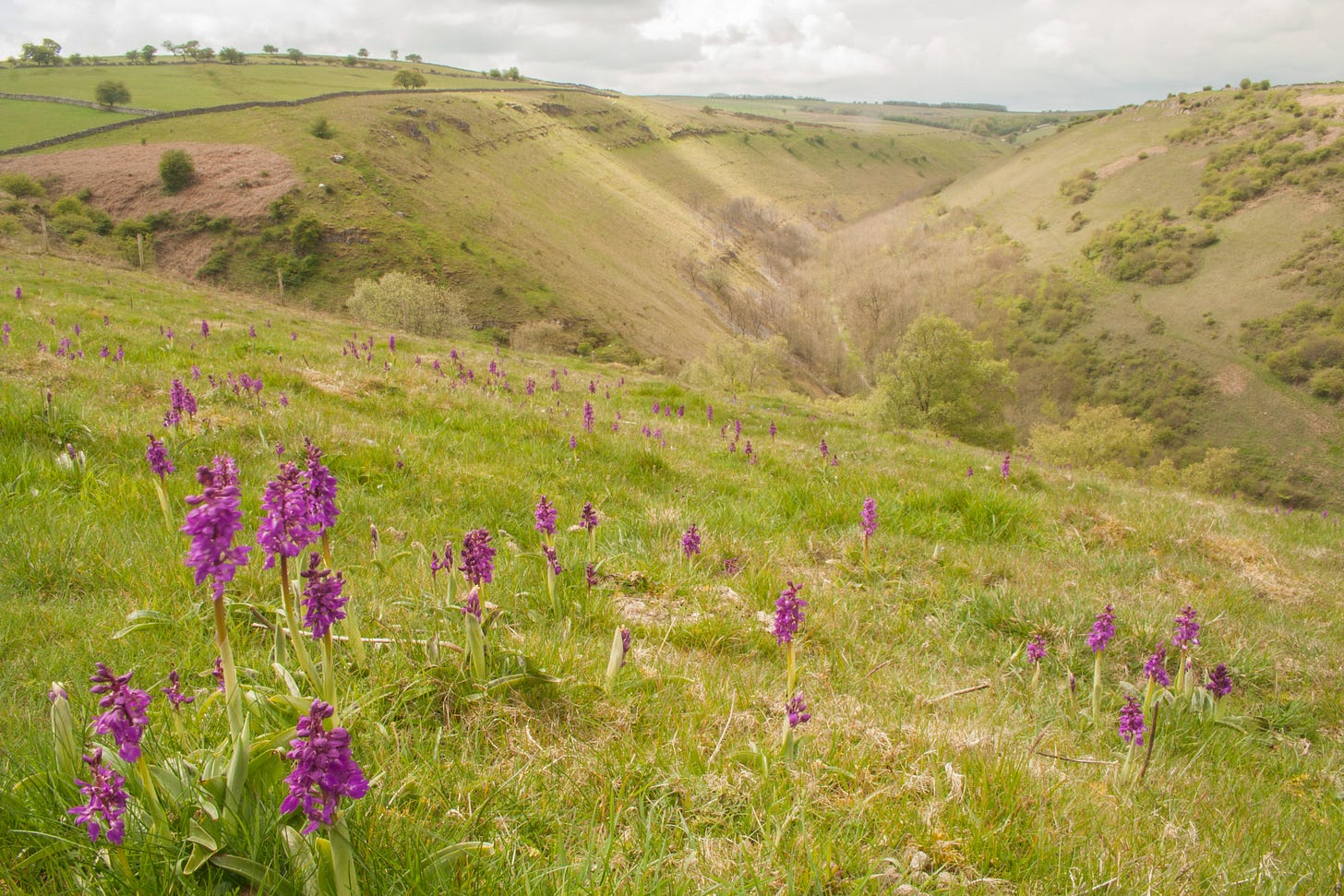Floral Frolics Down The Derbyshire Dales: Coombs Dale
Situated one kilometre south of the village of Stoney Middleton, this valley is definitely not abashed to show off its botanical talent. Even before stepping foot into its luxuriant reserve, an adjacent field on its eastern approach is in May turned marble-white by the abundance of a species called meadow saxifrage. Whilst inside it boasts woolly thistles and restharrow, small teasel and greater stitchwort, a fantastic proportion of limestone fern, and its bluebells, on both its southern and northern flanks, are more widespread and compact than any other of its rival dales. The diversity of herbs - too many to mention - is due to its broad variety of habitats. Moreover, there are no fewer than six species of orchid, one of which is a little bit special - the dark red helleborine.
The whereabouts of one of the Peak’s primadonnas of its phytological kingdom have been made well known by the construction of a conspicuous single, modest enclosure. Its dilapidated post-and-wire fence, testimony to a shameful neglect, keeps neither livestock out nor orchids in. Specimens of the latter pop-up like intrepid escape artists in the most unlikely of places as distant as the humid and gloomy banks of the valley’s little rill. Always so lamentably thin on the ground, yet flaunting flowers the hue of rubies, their rarity, as well as their beauty combined, ensures their entry in the premier league, must-see wish lists of every self-respecting floraphile. The enclosure butts-up against a public footpath that ascends out of the dale south-south west in the direction of Rowland. Some of the plants emerge so proximate to this trail that they exist in a perpetual threat of being squashed.
Not all the valley’s orchids play hide and seek. Dark red helleborines flower in July. Two months before they do, their cousins, the early purple orchids, will be putting on their display high above them along the craggy brim of the same side of the dale. Equally as beautiful but unequivocally less rare, it is indeed the colony’s density that is its most endearing characteristic. The early purples can be found by following the aforementioned path to the access point of the dale, then, keeping within its bounds, maintain a bearing north-north west parallel to the wall.
Sandwiched between these orchid species is a butter-yellow spread of primroses. Like the early purples their prettiness is enhanced by the concentration of their host. Unlike the early purples, when the primroses flower in April, their colony can be seen from hundreds of metres away.
On a map, the outline of the valley is evocative of an asymmetrical smile, possessing sunny spots and shady places, in balanced measure, on both halves of its cheeks. And, from head to foot, its average length of two-and-a-half kilometres ought not to force a too-physical demand on the unacquainted guest.
The easiest access into the dale is from Stoney Middleton’s sports field car park off the A623. In autumn, the quantity of sloes that form on those very same shrubs that screen the valley’s bridlepath could produce enough pink gin to ruin the entire motherhood of London !




